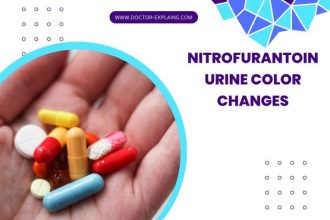Urinary tract infections (UTIs) are a common and uncomfortable condition that can disrupt your daily routine.
If you’re a coffee lover, you might be wondering when it’s safe to enjoy your favorite beverage again after recovering from a UTI.
In this article, I’ll guide you through six key facts and tips about when and how to reintroduce coffee into your diet after a UTI.
The short answer:
Drink coffee after UTI at least 48 hours after the resolution of major UTI symptoms (particularly dysuria and frequent urge to urinate). And then do so gradually, starting with small amounts of coffee, keeping an eye on your body’s response.
Key points in this article:
- Caffeine can irritate the bladder
- Symptoms should subside before reintroducing coffee
- Start with small amounts of coffee
- Stay hydrated
- Choose low-acid coffee
- Monitor your symptoms
- Consider decaffeinated coffee
- Experiment with alternative beverages
Fact 1: Caffeine can irritate the bladder
How caffeine affects your bladder:
Caffeine is a natural stimulant found in coffee, tea, and various other beverages. It can cause your bladder to fill more quickly and increase the urge to urinate. During a UTI, your bladder is already inflamed and irritated, so consuming caffeine can exacerbate these symptoms, making you feel even more uncomfortable.
Why it is important to cease coffee during UTI:
While recovering from a UTI, avoiding or minimizing caffeine intake is crucial to help your bladder heal.
This means cutting back on your coffee consumption and other caffeinated beverages, such as tea and soda. Reducing your caffeine intake will allow your bladder to recover and help alleviate UTI symptoms more quickly.
Fact 2: Symptoms should subside before reintroducing coffee
As you undergo treatment for a UTI, it’s essential to pay close attention to how your body responds. Keep track of any improvements or worsening of symptoms and discuss them with your healthcare provider.
This will help you determine when it’s safe to reintroduce coffee into your diet.
Coffee can increase the frequency of urination, urgency to urinate, and even painful urination. Wait at least 48 hours before these symptoms go away before drinking coffee or other caffeinated beverages.
Ensure complete UTI symptom resolution.
Before you start drinking coffee again, make sure that your UTI symptoms have completely resolved.
Wait at least 48 hours before these symptoms go away before drinking coffee or other caffeinated beverages.
Consuming coffee prematurely can irritate your bladder and potentially prolong your recovery. If you’re unsure whether your symptoms have fully subsided, consult your healthcare provider for guidance.
Tip 1: Start with small amounts of coffee
A. Gradually reintroducing coffee into your diet
Once your UTI symptoms have disappeared, you can begin to reintroduce coffee into your diet. Start with a small amount of coffee and gradually increase your intake over several days. This will allow your bladder to adjust to the presence of caffeine again without becoming overwhelmed.
B. Observing how your body responds to caffeine
As you reintroduce coffee, pay close attention to how your body responds. If you notice any urinary discomfort or a return of UTI symptoms, scale back your coffee consumption until you feel comfortable again. Listen to your body and adjust your coffee intake accordingly.
Tip 2: Stay hydrated
A. The importance of drinking plenty of water during UTI recovery
Drinking ample water is crucial for UTI recovery. Staying well-hydrated helps flush bacteria from your urinary tract and can alleviate UTI symptoms. Aim for at least eight 8-ounce glasses of water per day, or more if your healthcare provider advises it.
B. Balancing water intake with coffee consumption
As you reintroduce coffee into your diet, make sure to maintain proper hydration by continuing to drink plenty of water. Try to drink at least one glass of water for every cup of coffee you consume. This will help balance the diuretic effects of caffeine and support your bladder health.
Tip 3: Choose low-acid coffee
A. The benefits of low-acid coffee for bladder health
Acidity in coffee can also irritate the bladder, especially during UTI recovery. Opting for a low-acid coffee can help reduce the risk of bladder irritation. Look for coffee brands that specifically market their products as low-acid or stomach-friendly.
B. Brewing methods that can reduce acidity
In addition to choosing low-acid coffee beans, you can also experiment with different brewing methods to reduce the acidity of your coffee. Cold brewing, for example, is known to produce a less acidic coffee compared to hot brewing methods.
Tip 4: Monitor your symptoms
A. Keeping track of any changes in urinary symptoms after reintroducing coffee
As you reintroduce coffee into your diet, continue to monitor your urinary symptoms. Keep track of any changes, such as increased frequency or urgency, discomfort, or pain. If you notice any worsening symptoms, consider reducing your coffee intake or consulting your healthcare provider.
B. Adjusting coffee intake based on symptoms and body response
It’s important to be mindful of your body’s response to coffee consumption during UTI recovery. If you notice any adverse reactions or a return of symptoms, don’t hesitate to adjust your coffee intake accordingly. It may be necessary to cut back on coffee or eliminate it from your diet temporarily until your bladder has fully recovered.
Tip 5: Consider decaffeinated coffee
A. The benefits of switching to decaf coffee
If you find that caffeine continues to cause bladder discomfort or trigger UTI symptoms, consider switching to decaffeinated coffee. Decaf coffee can still provide the taste and warmth of regular coffee but without the potentially irritating effects of caffeine on your bladder.
B. Understanding the differences between regular and decaffeinated coffee
Decaffeinated coffee undergoes a process to remove most of the caffeine content, resulting in a beverage that typically contains only about 2 to 5 milligrams of caffeine per 8-ounce cup, compared to 95 to 200 milligrams in regular coffee. This significant reduction in caffeine can make decaf coffee a more bladder-friendly option during UTI recovery.
Tip 6: Experiment with alternative beverages
If you find coffee still causing discomfort or triggering UTI symptoms, consider trying alternative beverages that are less likely to irritate your bladder.
There are many bladder-friendly options available that can provide a satisfying and healthy alternative to coffee.
Examples of bladder-friendly alternatives to coffee
- Herbal teas: Many herbal teas are caffeine-free and come in a wide variety of flavors. Look for ingredients known to support bladder health, such as chamomile, marshmallow root, or corn silk.
- Hot water with lemon: A simple combination of hot water and a squeeze of fresh lemon juice can provide a warm, refreshing, and caffeine-free alternative to coffee.
- Golden milk: This soothing beverage combines warm milk (or a milk alternative) with turmeric, ginger, and other spices, offering a comforting and anti-inflammatory alternative to coffee.
- Chicory root coffee: Made from roasted and ground chicory root, this caffeine-free coffee substitute has a similar taste and texture to regular coffee but is less likely to irritate the bladder.
In summary, it’s essential to wait until your UTI symptoms have completely subsided before reintroducing coffee into your diet. Once you’re ready to enjoy coffee again, do so gradually and pay close attention to how your body responds. Stay well-hydrated, choose low-acid coffee, and consider decaffeinated options or bladder-friendly alternatives if needed. By following these tips, you can safely enjoy your favorite beverage while supporting your bladder health during UTI recovery.





